
Apple skin disorders that develop after harvest
Several skin disorders are not yet visible at harvest, but they will develop during storage or at other steps in the chain. Here we give an overview of the main skin disorders that can be found on apples
Overview of postharvest skin disorders
-
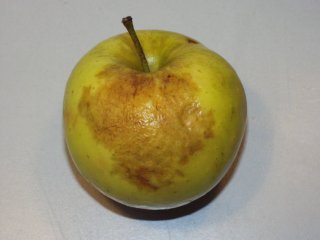
External CO2 injury
External carbon dioxide (CO2) injuries are visible as light brown spots on the skin that become slightly sunken and irregular at a later stage. There is a clear boundary between the damaged spots and the healthy skin. This damage can occur especially with the most unripe picked apples, on the shadow side of the apple. The internal fruit tissue is not affected. The injury is associated with high CO2 levels in storage rooms. -
Greasiness
Greasiness is a small layer of natural wax on the skin. Certain varieties, such as Jonagold, develop this greasy surface. The apple surface can even be slippery to touch. It is a sign that these apples are overripe. Therefore, the remaining shelf-life is short. -
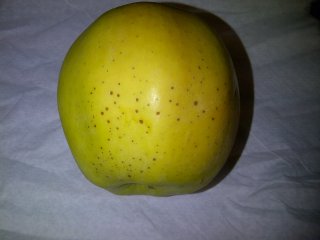
Lenticel breakdown
Lenticel breakdown appears as one or more dark brown round pits centered on a lenticel. It occurs after storage and packing. Early symptoms are like small pits. These pits can grow and come together to form larger spots. Change of handling and packing line conditions can reduce the incidence of this disorder. -
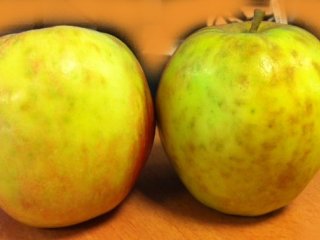
Senescence scald
Senescence scald appears as a browning of the skin. The brown stains can have clear edges. The apple is overripe due to late harvest or too long storage. The inside of the apples can therefore be soft and with signs of 'senescence breakdown'. Golden Delicious and Idared in particular are susceptible varieties. -
Shrivelling
Shrivelling is the consequence of too much water loss of the apple. Apples start to show shriveling symptoms when they have lost approximately 4-5% of water. This should be counted from the moment of harvest. To avoid shrivelling, a low and stable temperature and high humidity during storage will help. -
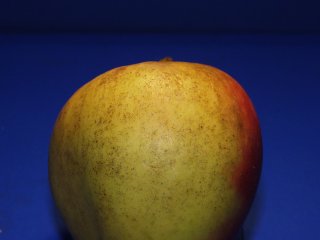
Skin spots
Skin spots is a typical disorder for the Elstar variety. On the green part of the apple, numerous very small brown/black spots are visible. From a distance, it can appear as if grains of sand cover the skin. It can be visible already in the storage room, but it can also appear unexpectedly during its subsequent shelf-life. The cause lies earlier in the supply chain. Problems are greatly reduced in Dynamic Controlled Atmosphere storage with very low oxygen (DCA or DCS technology). -
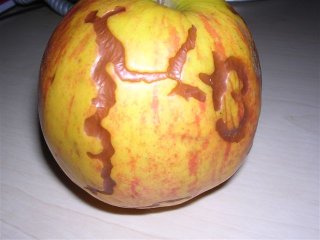
Soft scald
Soft scald has typical symptoms. The affected skin is soft and smooth and shows an irregular ribbon-like brown area with sharp edges. At a later stage, secondary fungus infections can follow that spot the brown area with black. The flesh just below the brown skin is usually soft. It usually appears early in storage and is a type of chilling injury. A preventive measure is therefore a stepwise cooling-down at start of storage. -
Superficial scald
Superficial scald, also called common scald, is a disorder that is visible on the skin. It looks like a brown stain with no clear edges and usually develops on the green part of the fruit. The flesh under the skin is not affected. This disorder can get worse during storage and especially during shelf-life. Therefore, it may appear unexpectedly after a few days on the shelf. However, the cause lies earlier in the supply chain. Some varieties are more susceptible, such as Granny Smith and Red Delicious. Low temperature and low oxygen during storage and application of 1-MCP can reduce the risk.